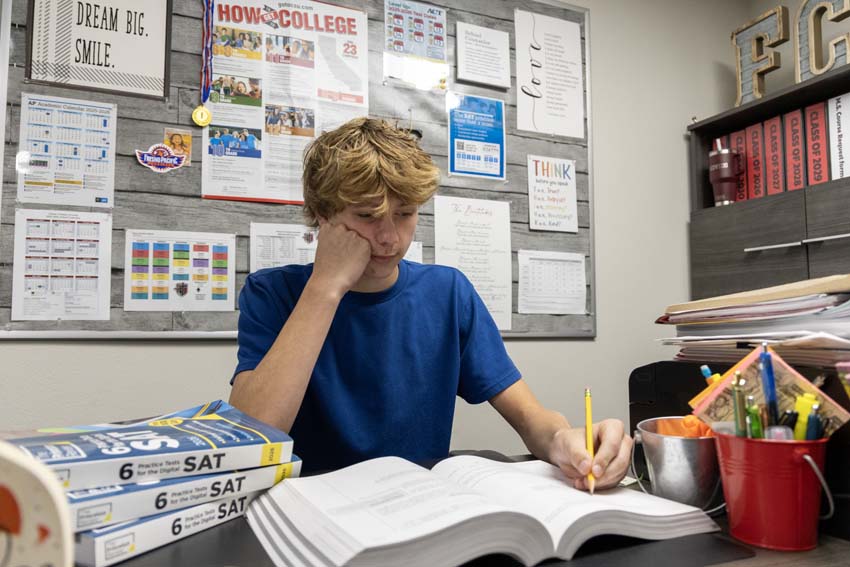The California education system once thrived, and California was known as one of the more educated states in the U.S. However, in recent years, California has shown signs of drastically changing for the worse, and now stands at the bottom of the list of state education rankings.
The state of California spent over $159 billion on education in 2009, which dwarfed the national average of $26.6 billion per-state. Despite the difference in budgets, California is a very large state and requires more funding than the average state.
Though this number appears catastrophic, the cost should be worth it as long as our education is above average. Unfortunately, the California education system is far under the national average.
Although the funding appears over-embellished, if not extraordinary, the hard truth is that California’s test scores are well below the mark. In fact, a 2009 study by the U.S. Department of Education found that 28 percent of students fall below basic on math scores and fall 9 points below the national average for eighth grade reading.
Shortcomings of the system
Some of the obvious problems with the state’s education system include the high teacher-to-pupil ratio. On average, California has a 20:1 ratio, while the national average stands around 15:1. Per-pupil spending has also decreased by an estimated $1000 since the economic downturn of 2008.
There are many factors contributing to the current state of the California economy, one of which is a lack of funding. Recently inaugurated Governor Jerry Brown ran on a platform of better education for California and increased economic stability.
However, one of Brown’s first acts as governor was shaving some $12.5 billion from California’s budget. Education reforms, such as eliminating the California Education Advisory Office and hiking up University of California tuition, have also gone into effect.
Another outdated education tool being used is the method of measuring a student’s intelligence through Standardized Testing and Reporting (STAR) tests and other standardized tests. The tests used today are completely obsolete and leave many gifted children, in areas such as creative writing and art, unrecognized. These tests merely evaluate student’ arithmetic skills, spelling and reading comprehension, ignoring aspects of critical thinking.
Children who show above-average artistic ability should have the opportunity in school to learn more about art and writing in order to improve their skill sets. No student’s fire for education should be extinguished by a lack of resources.
However, this specific flaw in the California education structure is not merely limited to the scope of our state — it expands into a nationwide problem. This problem stems from neglecting students with exceptional abilities in writing and other artistic forms, such as painting and acting.
So what may be the solution for the stagnant learning process? Incentive.
The solution: Incentive
Teachers should be rewarded for their good teaching and creative styles. This motivation can be produced by implementing the following measure: at the beginning of the year, each class is given a test measuring the students’ understanding of several subjects ranging from mathematics to interpretation of poetry. These scores are then evaluated and sent back to the teachers to give them a general measure of their classroom’s current comprehension.
Then, at the end of that year, students are given a slightly more advanced test to reflect their previous year of instruction. Once again, the scores are evaluated and sent back to the teachers. At this point, however, the teacher at the school whose class showed the highest improvement in test scores should be given a bonus or large reward of some kind.
This way, teachers are more motivated to teach their students and to find new ways for them to learn the required material. Programs like this have been tried in North Carolina, where teachers have received bonuses for above-average scores on end-of-the-year exams.
Children should be taught to think critically and to analyze the information they are taught, not just be able to select the correct answer on a multiple-choice test. For example, students should be taught why history is important to them and how they can learn from our nation’s past mistakes. This way, students will find history more interesting and have a desire to learn, instead of waiting for the bell to ring.
Although students at Fresno Christian might be thought of as immune to the inadequate California public schools, this is far from the case. In the big picture, it is not about individual schools. One school cannot single-handedly send out millions of new students who are ready to do good things for the world. Education is a broad issue, and 89 percent of students receive their education from public schools.
The California education system must turn around soon in order to begin producing young people who are smart and capable in a rapidly changing world, where finding jobs is more competitive than ever. Lawmakers should adopt a program like I propose in order to boost California back to the top of education rankings.
For more politics, read the Jan. 31 column, Menu labeling law expands ‘nanny state.’






